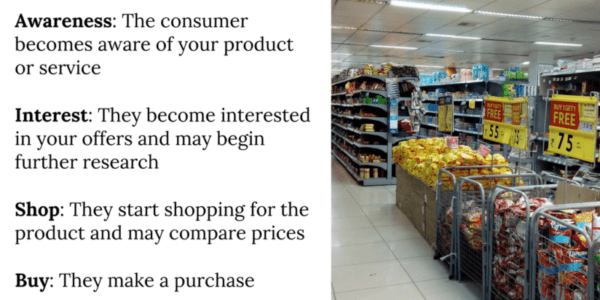Audience engagement is challenging, whether in public speaking or content marketing. Marketers, event hosts, presenters, teachers, etc., know that communication can break down without audience engagement, making it unlikely to impart the desired message.
What Is Audience Engagement?
Audience engagement refers to a group of people’s active and positive (or negative) responses. You succeed at audience engagement by holding attention and interest and encouraging participation.
Public Speaking or Presentations
In public speaking or presentations, audience engagement refers to the level of interaction, interest, and emotional connection between the speaker and the audience. It measures how effectively the speaker captures listeners’ attention, communicates their message, and motivates the audience to feel, think, or behave in a certain way.
Audience Engagement in Content Marketing
Many businesses want people to care about what they publish, creating content to make that happen. But in content marketing, audience engagement is not really about making the audience care. On the contrary, it’s about maintaining the target audience’s interest.
That means you need to give the audience something they already care about first, and then once you have them, the rest is about creating a connection. Put another way, connect what the audience already cares about to your content, giving them a reason to pay attention.
And it begins with your title or headline.
Headlines That Promote Audience Engagement
Headlines are pivotal in fostering audience engagement because they are the first thing potential readers see in most cases. A well-crafted headline can pique curiosity, evoke emotions, and entice people to explore further.
Here are some examples.
- Discover the Perfect Gift and Create Unforgettable Memories – The headline taps into people’s desire to create lasting, beautiful memories with loved ones. It positions the brand’s product as the solution to the common need.
- Maximize Business Growth by Unlocking Seamless Collaboration – This headline focuses on the audiences’ primary concern: growing their business. It implies that using the company’s product will enable collaboration and help the business grow faster. The connection between the customer’s existing goal and the company’s offering makes the headline effective.
- Transform Your Decision-Making Through Data-Driven Insights – Most executives already care about improving decision-making because it’s a vital skill in business that enhances overall performance. The headline connects the desire for optimal business performance to the company’s product.
- Luxurious Treatment in a Serene Oasis to Revitalize Your Mind and Body – This headline appeals to the customer’s need for relaxation and rejuvenation. Emphasizing luxurious treatment connects the spa’s services to the customer’s longing for such experiences.
Note that it’s also good to emphasize what your audience already cares about throughout the content, not just the headline.
The Importance of Website Traffic for Audience Engagement
Website traffic is the foundation.
Without a steady flow of website visitors, it’s difficult (if not impossible) to establish connections, build relationships, and ultimately convert users into loyal customers.
Businesses with enough traffic and great content can see up to 70% audience engagement. And most convert between 2% and 10% of their total visitors into paying customers.
Considering those numbers, you’ll need a lot of traffic, and the best way to do it is through SEO (search engine optimization). That’s because paying for traffic can get expensive fast and become unsustainable.
In contrast, SEO helps you attract relevant organic traffic, and your gains can remain for many years. For example, BuzzFeed spent resources on SEO to build up its authority on the web, and today they receive loads of organic traffic.

Tools to Build and Track Audience Engagement
Here are several tools that can simplify tracking and improve audience engagement.
- Social Media Management Tools: These tools help manage and schedule content on multiple social media platforms and track audience engagement. Examples include Hootsuite and Buffer.
- Social Listening Tools: These tools monitor social media platforms for brand mentions, keywords, and conversations. They can provide insights into audience sentiment and engagement. Some examples are Brandwatch, Mention, and Awario.
- Web Analytics Tools: These tools track website traffic, user behavior, and engagement metrics to help optimize your site and content strategy. Examples include Google Analytics and Matomo.
- Email Marketing Tools: Email marketing tools help create, send, and track email campaigns. They provide insights into open rates, click-through rates, and audience engagement. Some examples are MailerLite, SendinBlue, and Constant Contact.
- Content Management Systems (CMS): These tools help create, manage, and publish content on your website or blog, such as WordPress. Many offer built-in analytics for audience engagement.
- Customer Relationship Management (CRM) Tools: CRM helps manage and track customer interactions and engagement across various touchpoints like email, social media, and customer support tickets. Some good examples are Salesforce, HubSpot, and Zoho CRM.
- Survey and Polling Tools: Use these tools to create surveys, polls, or quizzes to gather feedback from your audience. Some great tools on the market include SurveyMonkey, Typeform, and Google Forms.
- Marketing Automation Tools: These tools automate various aspects of your marketing strategy, such as email campaigns, social media posting, and lead nurturing, while tracking audience engagement. Some examples are Marketo and HubSpot.
- User-Generated Content (UGC) Platforms: UGC tools help collect, manage, and display user-generated content, such as testimonials, reviews, or creative works, to foster audience engagement. Examples include TINT, Yotpo, and Stackla.
- Influencer Marketing Platforms: These platforms help identify, connect, and collaborate with influencers relevant to your audience. Some considerations are AspireIQ, Upfluence, and Traackr.
- A/B Testing and CRO (Conversion Rate Optimization) Tools: These apps can help you optimize your website for better audience engagement and conversion rates through testing and data. Some examples include Optimizely and Google Optimize.
- Heatmap and User Behavior Analytics Tools: They provide insights into how users interact with your site or content, such as clicks, scrolls, or mouse movements, helping you optimize for better audience engagement. Hotjar, Lucky Orange, and Mouseflow are great examples.
How to Improve Audience Engagement in Content Marketing
Here are several ways to go about improving audience engagement in your business.
1. Identify Common Ground
Understanding your target audience’s interests, needs, and preferences is vital. Find areas where your product or service intersects with their concerns, values, or passions.
Consider the following tips.
- Market research: Conduct thorough market research to learn about your audience’s demographics, psychographics, and behavior.
- Analyze competitors: Study the competition and their marketing strategies to identify what works well for them and how they connect with the audience.
- Engage with the audience: Engage with people on social media, online forums, and other platforms to gain insights into their concerns, values, and passions.
- Develop customer personas: Detailed customer personas representing various segments of your target audience can help you understand unique characteristics, motivations, and pain points.
- Analyze the customer journey: Identify key touchpoints and moments where you can connect your product or service to specific concerns, values, or passions.
- Identify shared values: Determine the values and beliefs your brand and target audience share. Then, highlight these values in your content to create a stronger emotional connection.
2. Demonstrate Value
Show the audience how your product or service can add value to their lives, solve problems, or fulfill needs related to their interests.
Here are some tips to help.
- Focus on benefits: When demonstrating value, emphasize your product or service’s benefits rather than just listing its features. Show how each feature can improve your audience’s lives or help them achieve their goals.
- Customer success stories: Share stories of real customers who have benefitted from your product or service. Show how it addressed specific needs or related problems.
- Leverage social proof: For example, share testimonials or endorsements from satisfied customers and industry experts to build trust and credibility.
- Highlight unique selling points: Differentiate your business from competitors by emphasizing its unique selling point (USP) throughout your content.
- Use engaging visuals: Incorporate infographics, videos, or animations to help people understand and appreciate product value.
- Address potential objections: Proactively identify and address your audience’s possible complaints or concerns. Then, demonstrate how your product can overcome these challenges.
- Showcase success metrics: Many potential customers care about specific success metrics. So you can present data highlighting your offer’s positive impact on other customers.
- Offer comparisons: Create comparison charts or guides. For example, you can share a product’s advantages over competitor offerings.
- Provide guarantees: This can assure people of your product’s quality and value, reducing perceived risk and increasing confidence.
- Encourage trial experiences: Allow the audience to try your offerings without commitment, letting them experience its value firsthand.
3. Educate and Inform
Creating content that educates people about related topics and how they relate to your solutions can help improve audience engagement. You can use various formats like blog posts, videos, webinars, podcasts, etc.
Consider the following content ideas.
- Develop how-to guides and tutorials: You can use these to attract and engage people interested in specific topics.
- Publish informative blog articles: Write in-depth articles that explore certain topics or the benefits of your solutions. For example, you can address common questions, misconceptions, or concerns about your industry or product.
- Host webinars or workshops: Organize webinars and workshops that provide valuable information to address audience needs.
- Share infographics or visual aids: Design eye-catching visual aids summarizing key information about relevant topics.
- Leverage podcasts: Start a podcast and create content regularly.
- Offer downloadable resources: Provide e-books, whitepapers, or checklists your audience can download.
- Conduct interviews or Q&A sessions: Interview industry experts, influencers, or satisfied customers.
- Use social media for micro-learning: Share bite-sized tips, facts, or insights on social media platforms.
- Curate third-party content: Share relevant articles, studies, or resources from trusted sources that can engage the audience and support your solutions.
4. Leverage Storytelling
Craft compelling stories that incorporate your product within the proper context. For example, you can show how your offering addresses specific concerns in stories.
Here are some ideas for storytelling to improve audience engagement.
- Share real customer experiences: Narrate real-life experiences of customers who have used your product to overcome challenges, achieve goals, or improve their lives.
- Develop brand stories: Create authentic stories highlighting your company’s journey, mission, and values.
- Use narrative formats: Case studies or fictional stories can make your brand more relatable and engaging.
- Employ emotional appeal: Incorporate emotional elements to evoke feelings like empathy, excitement, or curiosity. That can help create a deeper connection with the audience.
- Highlight personal stories: Share personal stories of your team members, company founders, or partners, demonstrating how you make a difference.
- Use visual storytelling: Create compelling videos, images, or illustrations that tell a story.
- Show off user-generated content: Encourage your customers to let you build a story around their experiences. This is a great way to create authentic and relatable stories.
- Use different storytelling forms: Experiment with various storytelling techniques, such as flashbacks, foreshadowing, or parallel narratives.
- Tie stories to current events or trends: Connecting your content to current events, trends, or popular culture can increase audience engagement.
5. Highlight Social and Environmental Impact
If your product has a positive social or environmental impact, emphasize this in your content marketing efforts. This can increase the likelihood that the audience will engage.
Here are some tips for consideration.
- Share your mission and vision: Sharing your company’s mission and vision for social or environmental impact can help.
- Share real-world impact: Show your product’s positive social or environmental effects through stories, providing tangible evidence of its impact.
- Highlight partners and collaborators: Mention any partnerships or collaborations with non-profit organizations, charities, or other entities working towards similar social or environmental goals.
- Incorporate sustainability initiatives: Discuss your company’s sustainability efforts, such as reducing waste, conserving energy, or using eco-friendly materials.
- Feature employee involvement: Share stories or images of your team members actively participating in social or environmental initiatives.
- Create cause-related campaigns: Develop marketing campaigns directly supporting the social or environmental cause. For example, you can donate a portion of sales to help raise awareness for the issue. In turn, more people may pay attention to your brand offerings.
- Use certifications and awards: Highlight any certifications, awards, or recognitions your company has received for its social or environmental efforts.
- Create cause-focused content: Provide informative resources that educate your audience about the issues your company supports.
- Encourage audience participation: Invite your audience to participate in your company’s initiatives. For example, you can create volunteer opportunities and run events or fundraisers.
- Leverage social media for social good: Share updates, stories, and successes related to your social or environmental impact.
6. Adapt to Changing Interests
Watch the latest developments and trends within your target audience’s sphere of interest. That way, you can adjust your content marketing strategy accordingly whenever necessary.
Some great ways of keeping up with things include the following.
- Monitor industry news and updates: Regularly follow industry publications to stay informed about new trends, changes, or developments.
- Utilize social listening tools: As noted earlier, social listening tools let you monitor conversations, mentions, and hashtags on social platforms. It’s a good way to identify emerging trends or shifts in audience interests.
- Ongoing audience research: Periodically survey your audience or analyze engagement data to understand their evolving needs and interests.
- Stay active in online communities: Participate in relevant forums, discussion groups, etc., to gain insights into your audience’s changing interests and concerns.
- Attend industry events: Join webinars, conferences, etc., to network with peers, discover new trends, and gather insights to inform your content strategy.
- Analyze competitor content: Keep an eye on your competitors’ content strategies to identify shifts in focus or emerging trends that may influence your strategy. But do not assume the competition is always correct. Instead, follow up with your research.
- Measure and optimize performance: Regularly analyze the performance of your content marketing efforts to identify areas for improvement or adaptation. Base your decisions on audience engagement and behavior.
How to Improve Audience Engagement in Public Speaking
You can use most of the same tips or tactics for improving audience engagement in content marketing with public speaking. But it’s worth going over everything specific to public speaking briefly.
Improving audience engagement in public speaking requires effective communication skills, audience-centric content, and personal authenticity.
Here are some strategies to help you during your speeches or presentations.
- Know the audience: Research and understand your audience’s demographics, interests, and expectations. This knowledge should help you tailor your content and delivery.
- Develop a clear message: Craft clear, concise, compelling messages that resonate with your audience. Ensure your main points are easy to follow and understand.
- Structure your speech effectively: Keeping it simple is best. Start with a clear introduction, body, and conclusion. Use signposts and transitions to guide your audience through the presentation. Signposts are markers or short statements informing the audience about the speaker’s position in a speech.
- Storytelling: Using storytelling techniques can create an emotional connection between the speaker and the audience, making the message more relatable and memorable.
- Project confidence and authenticity: Speak with genuine passion, enthusiasm, and conviction. Be yourself; let your personality shine through, allowing the audience to connect on a deeper level.
- Maintain eye contact: Establishing and maintaining eye contact with the audience throughout your speech is essential. It helps create a sense of connection and shows your active engagement.
- Use vocal variety: Vary your tone, pitch, and pace to maintain interest and emphasize key points. Avoid monotone speeches as they can be dull and challenging to engage with – instead, keep the audience’s attention with vocal dynamics.
- Body language: Effective body languages, like gestures, facial expressions, and posture, can enhance your message for a more engaging and dynamic presentation.
- Audience interaction: Encouraging audience participation through activities, questions, or discussions can create a more interactive and engaging experience.
- Visual aids: Using visual aids, such as slides, videos, or props, can support the speaker’s message and keep the audience visually engaged.
- Humor: Injecting humor into a speech can lighten the mood and make the presentation more enjoyable.
- Practice and refine your delivery: Rehearse your speech multiple times to become comfortable with your content and delivery. This will also help you project confidence during your presentation.
Keep These Audience Engagement Tips Close!
Audience engagement is a crucial factor in achieving desired outcomes. This resource is helpful whether the goal is to improve your public speaking or engage more customers through content marketing. So feel free to bookmark this page. That way, you can return to it whenever you want. Good luck.

I’m a freelance copywriter and SEO specialist. I aim to empower individuals and businesses with impactful marketing solutions and insights. In my downtime, I recharge by embracing the beauty of nature or cherishing moments with my loved ones. If you found value in this post, please consider sharing it.
Want a heads-up once a week whenever a new article drops?







